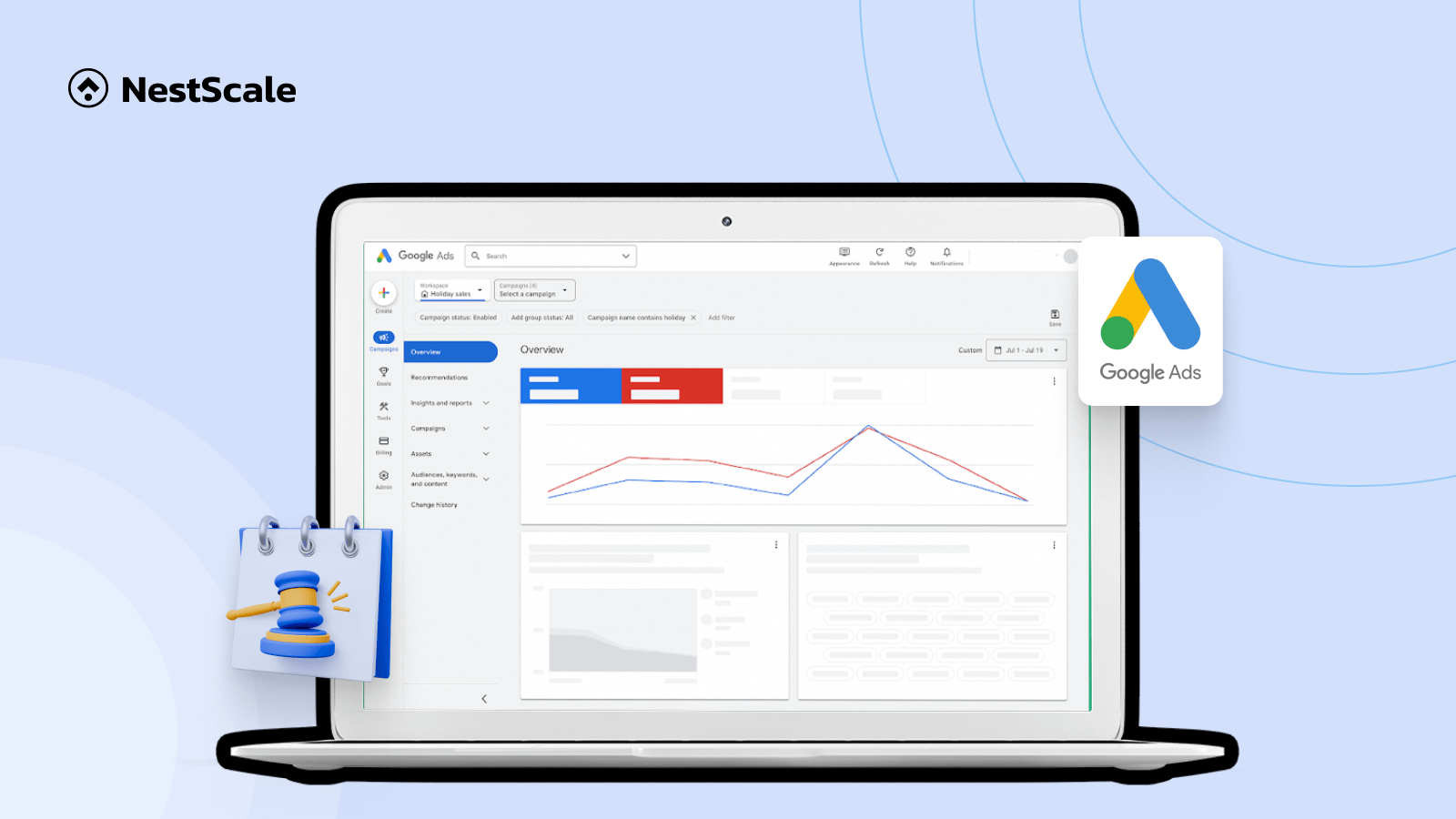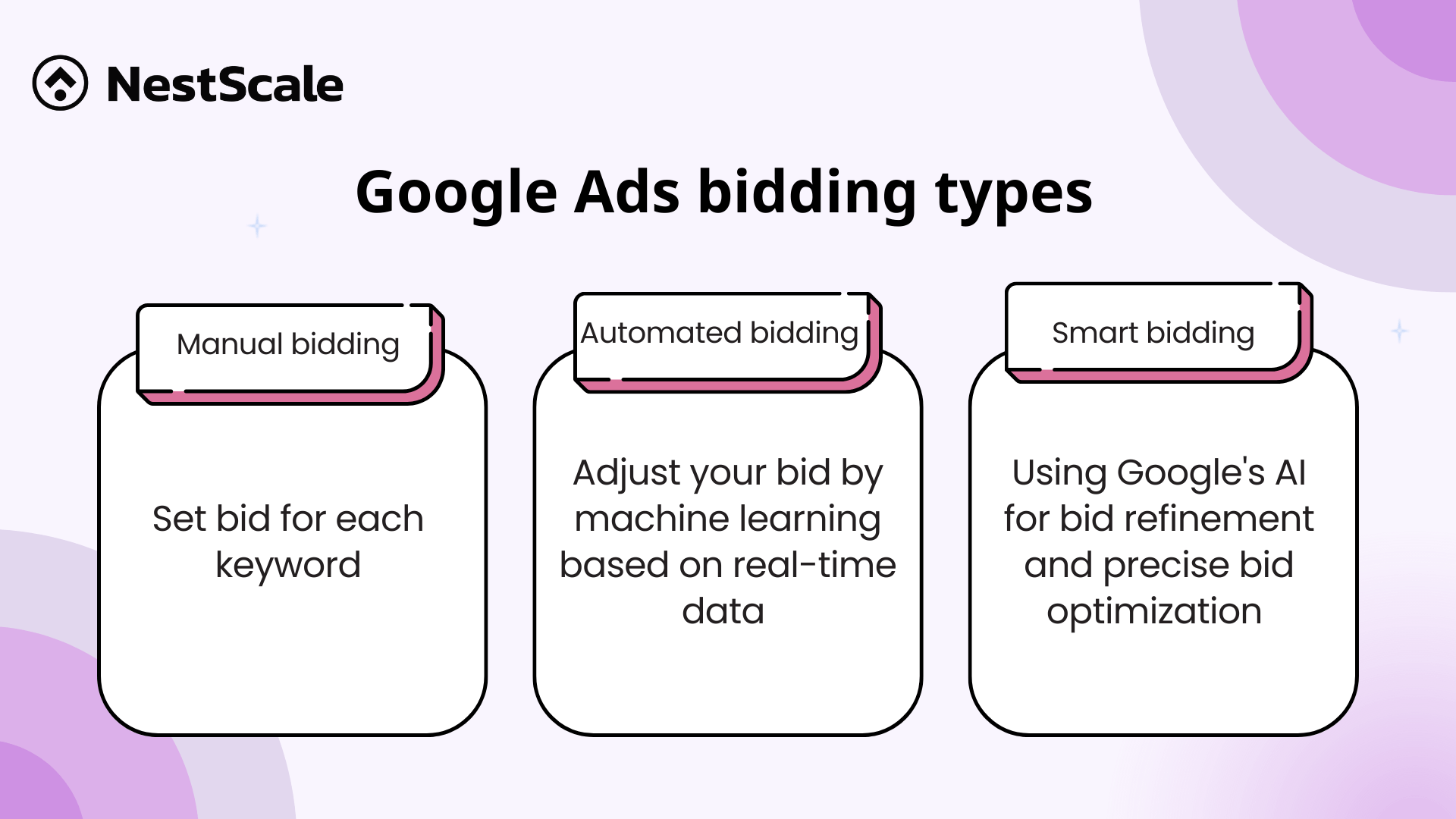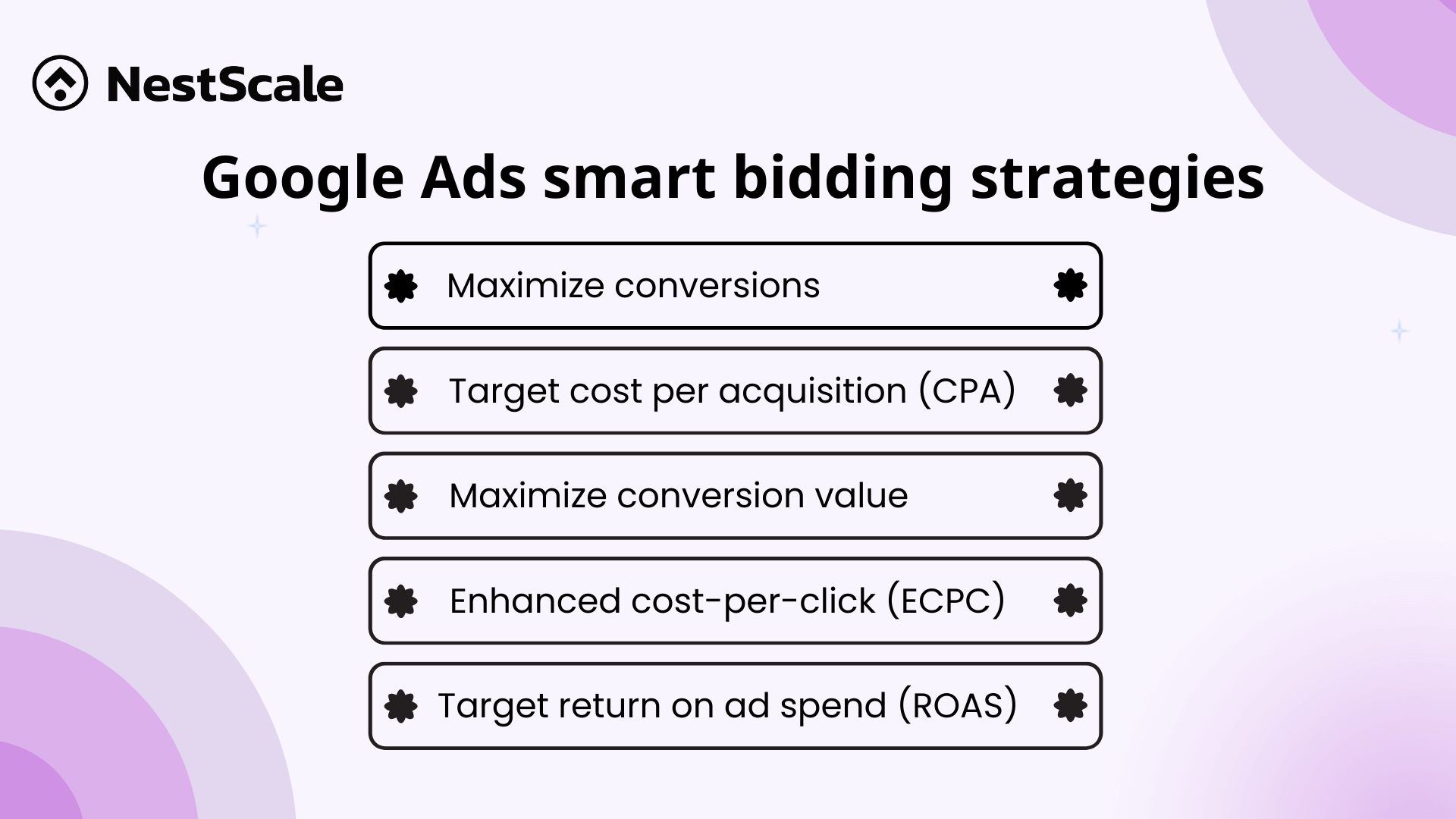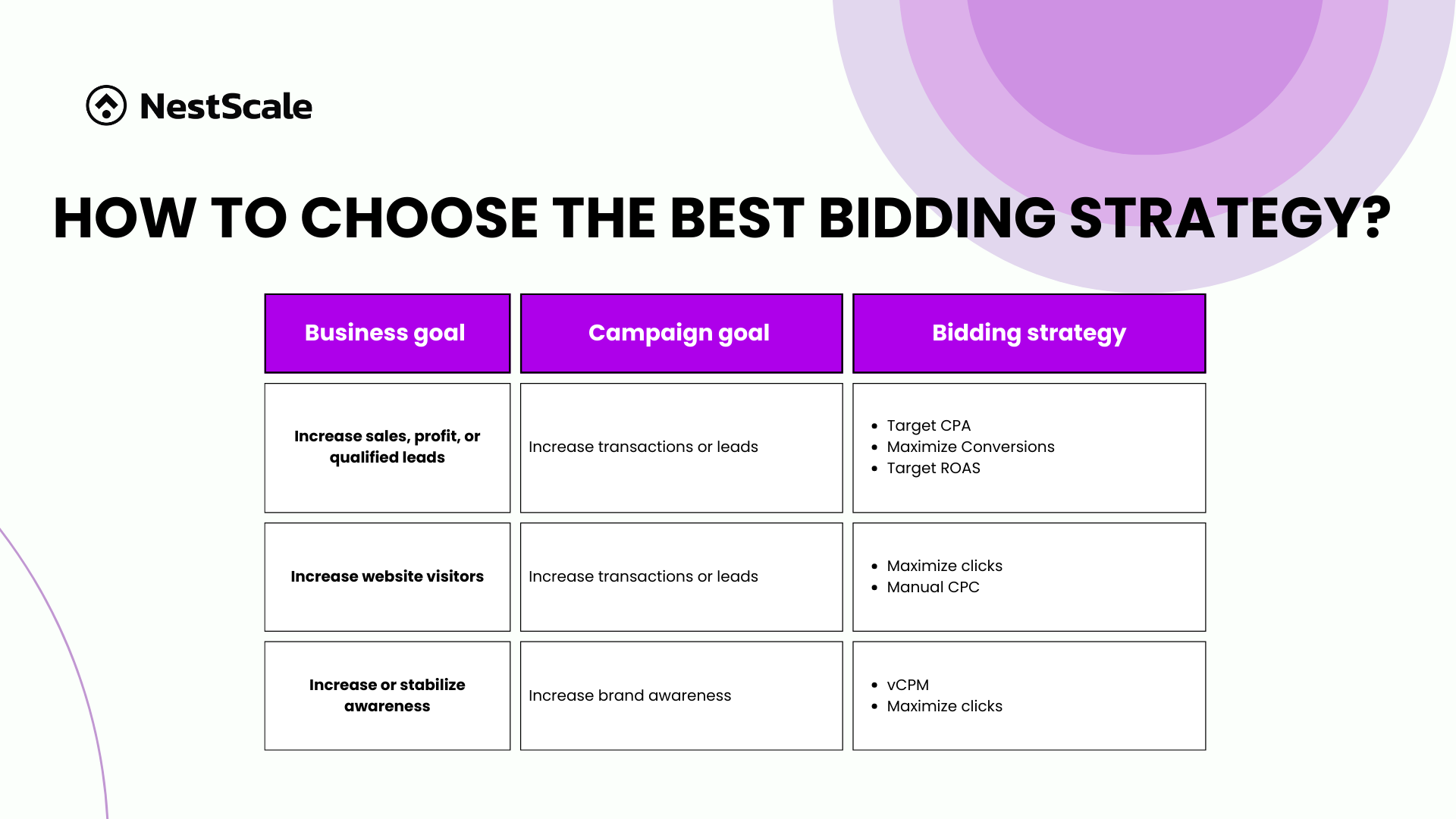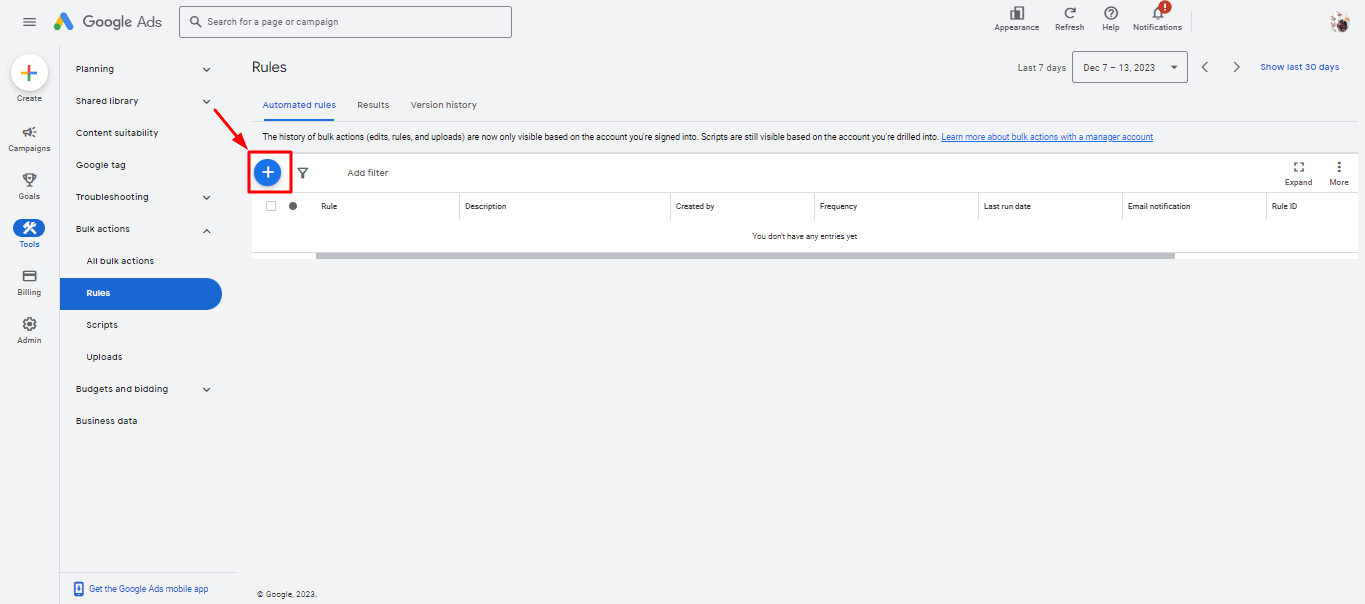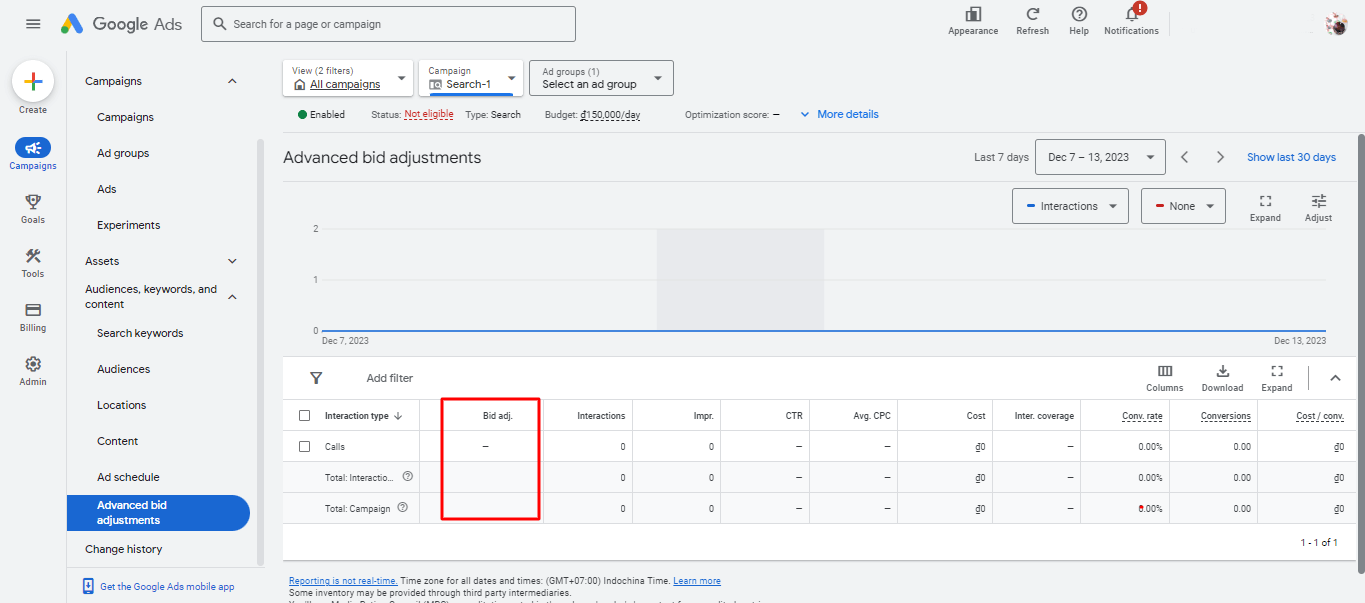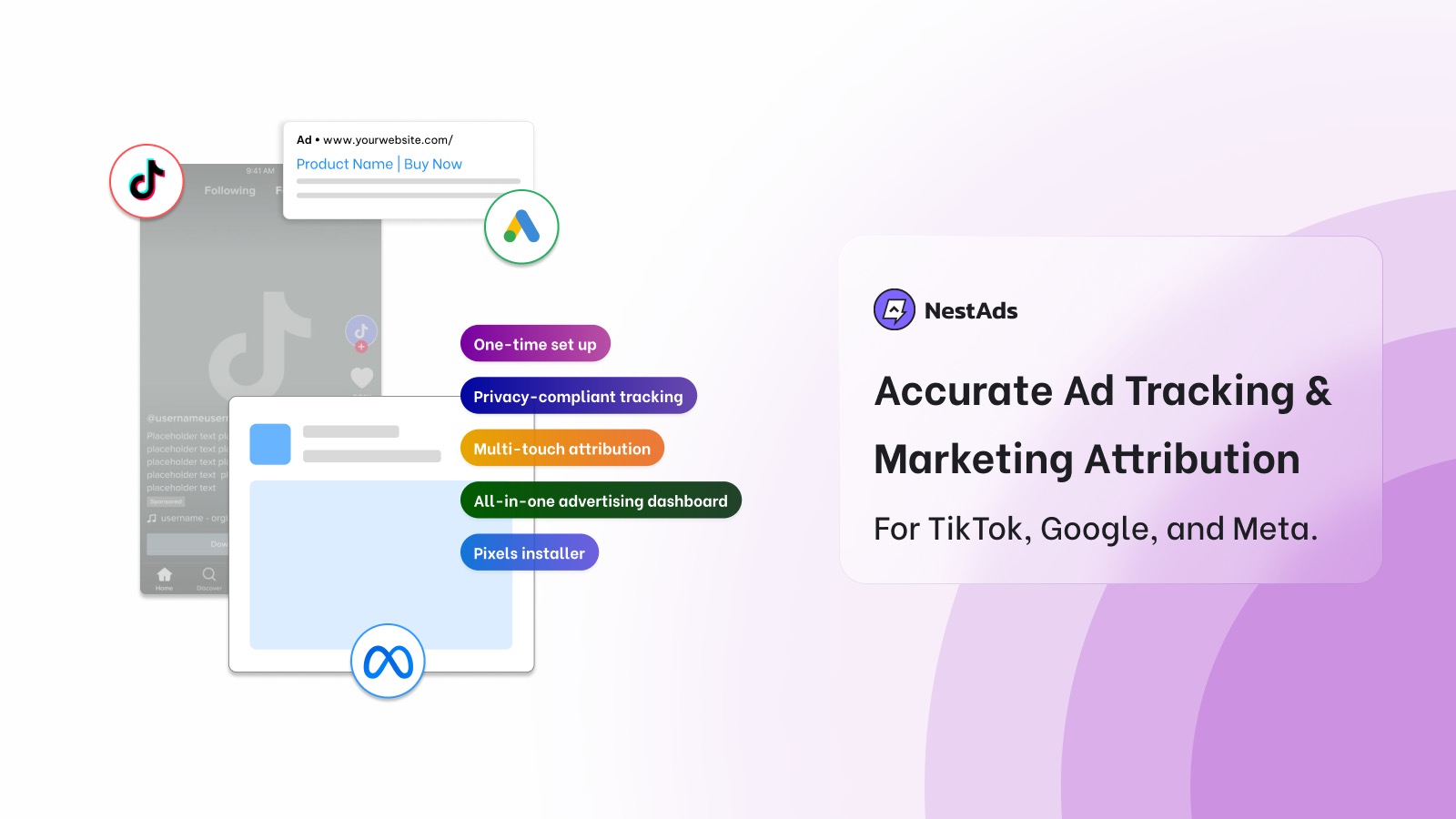Mastering the art of bidding is crucial for maximizing your campaign’s return on investment (ROI). This blog explores Google Ads bidding strategies, outlining effective tactics to align bids with campaign goals for optimal results. Ready to join? Get started together!
What is Google Ads bidding?
In Google Ads, bidding involves setting the maximum amount you’re willing to pay for a click on your ad per keyword. This bid determines ad placement in search results. It’s akin to an auction, where advertisers vie for top positions based on bids and ad quality.
When bidding for your campaign, the primary objective is to secure the lowest bid while achieving optimal results. To accomplish this, selecting an appropriate bidding strategy is crucial. Google typically defaults to automated bidding strategies that leverage machine learning to determine the most effective bid for your ads.
Despite the default recommendation, Google offers numerous alternative bidding strategies. It is worthwhile to explore these options and search for the one that best suits your needs. In the following section, we walk you through the bidding strategies and identify which strategy might work best for you.
Types of bidding strategies in Google Ads
There are 3 types of bid strategies in Google Ads: manual bidding, automated bidding, and smart bidding facilitated by Google. Each type carries its advantages and drawbacks impacting you and your campaign.
Manual bidding strategies
Just like the name, Google Ads manual bidding strategy lets you manually set your bids for each keyword. This allows you to control the maximum amount you’ll pay for each click on your ad for that keyword. You can either set a single bid for all keywords in an ad group or set individual bids for each keyword.
At the moment, there are 3 manual bidding strategies Google Ads:
- Manual Cost-per-click (CPC): you can establish a maximum cost-per-click for various ad groups or keywords, without Google’s assistance. This strategy enables easy adjustments by adding or removing bids within your campaign settings.
- Manual CPM: In this Google Ads bidding strategy, you define the price per 1000 impressions. This rate signifies the average cost rather than the maximum. Impressions are tallied regardless of whether users view or skip your ad.
- Manual vCPM bidding: This Google Ads bidding enables you to set bids for every 1,000 impressions where a user views your ad. Unlike CPM bidding, this strategy ensures your investment isn’t squandered on impressions where the ads weren’t seen. An impression is counted once the ad is displayed for at least 1 second on the Display Network (or 2 seconds on YouTube).
Who it’s right for
- Experienced advertisers: Manual bidding is an excellent starting point for those who have run multiple ads on Google.
- Lack of historical data: For new Google Ads accounts or those with little historical performance data, manual bidding offers a way to start advertising without the need for algorithmic predictions.
- Desire for control: If you prefer having direct oversight over your campaign’s minute details, manual bidding puts you in the driver’s seat.
- Ability to dedicate time: If you’re able to dedicate the required time, manual bidding can be a powerful tool to optimize Google Ads for conversions.
Advantages and Disadvantages
| Advantages | Disadvantages |
| Direct control over bids: set & adjust bids at the keyword or ad group level based on direct assessment & strategy | Challenging at scale: become complex and time-consuming as your PPC account grows |
| Immediate adjustments: enable quick responses to changes, competitor actions, or campaign performance insights | Risk of human errors: lack the precision of automated tools, making the process prone to mistakes |
| Detailed understanding of campaign performance: facilitate a deeper insight into the effectiveness of strategies & the mechanics of Google Ads | Time-intensive: require significant time and effort, essentially constituting a full-time job |
| Cost efficiency: allow for precise budget allocation, directing funds towards high-performing keywords |
Automated bidding strategies
Google’s automated bidding strategies utilize machine learning to automatically adjust your ad bids in real-time, striving to enhance your campaign’s performance and accomplish your desired objectives. At the moment, the automated bidding strategy that Google is providing for users is Maximize clicks bidding.
When you choose “Get the most clicks” in your ad settings, Google automatically changes your ad prices to get you the most clicks possible within your budget. They do this by looking at your chosen keywords and how many other ads are using them. This way, your ad price stays competitive and helps you get the most attention.
Who it’s right for
- Managers of large or multiple PPC accounts: If you’re overseeing extensive advertising efforts across various campaigns or accounts, automated bidding can significantly streamline management processes and optimize performance.
- Campaigns with specific goals: Automated bidding is particularly effective when you have clear, quantifiable goals, such as a target CPA or ROAS.
- Inexperienced with Google Ads or not confident in your bidding skills: Automated bidding can serve as a reliable way to manage campaigns efficiently, leveraging Google’s AI to make informed bidding decisions.
Advantages and Disadvantages
| Advantages | Disadvantages |
| Increased efficiency & time savings: reduce the manual workload involved in managing bids across ad groups and keywords | Dependence on sufficient traffic & conversion data: Google Ads account needs to have already accumulated a substantial flow of traffic & a reasonable volume of conversions. |
| Alignment with business goals: meet specific business objectives, whether that’s increasing site visits, or achieving an ROAS | Potential delays in changes taking effect: Adjustments made to campaigns might not reflect immediately cause they require manual synchronization |
| Reduced need for PPC expertise: handle the complexities, making sophisticated campaign management for all experience levels | Loss of direct control over bids and budget: place trust in Google’s algorithms to manage bid adjustments and budget allocation |
| Leveraging Google’s advanced algorithms: tap into the power of Google’s machine learning and vast data analysis capabilities |
Automated bidding strategies are highly effective for saving time and optimizing your account. However, it is essential to closely monitor and track their performance while they operate.
Smart bidding strategies
Google Ads Smart Bidding stands tall among automated bidding techniques, using Google’s AI for real-time bid refinement. What sets Smart Bidding apart from automated bidding is its precise optimization for conversions or their derived value. Through ongoing machine learning, bids dynamically adjust to meet predefined goals, ensuring peak optimization and efficiency in Google Ads campaigns.
When selecting Google Ads bidding strategies, let’s explore three key types to find the optimal fit for your campaign:
- Maximize conversions: Maximize Conversions aims to secure the highest number of conversions within your daily budget limit. You can set a target CPA when using this strategy to maintain an average CPA across your campaign or portfolio of campaigns.
- Target cost per acquisition (CPA): It enables advertisers to establish a desired CPA, which represents the expense of gaining a single customer in online advertising. This metric is determined by dividing the total cost of an ad campaign by the number of conversions achieved.
- Maximize conversion value: Maximizing conversion value bidding in Google Ads strategically optimizes bids to attain the highest conversion value within your budget. The system automatically fine-tunes bids, targeting users prone to significant conversions. You can use this one without setting the target if you want to drive as much conversion value as possible for your set budget.
- Enhanced cost-per-click (ECPC): The enhanced cost-per-click strategy is an automated version of manual CPC bidding. When you opt for this strategy, you permit Google to adjust your bid based on the likelihood of a click converting into a conversion.
- Target return on ad spend (ROAS): It is an automated bidding approach optimizing campaigns based on a specific ROAS. Advertisers specify their desired return value, and Google dynamically adjusts the bids based on the probability of achieving that targeted return.
Who it’s right for
- Advertisers with specific conversion goals: Ideal for those aiming to maximize conversions, achieve target CPA, or hit specific ROAS figures.
- Adopters of machine learning for optimization: Beneficial for marketers interested in using advanced machine learning algorithms to predict and enhance bidding outcomes.
- Campaigns with ample conversion data: Best for advertisers with a history of conversion data that can be leveraged by Smart Bidding algorithms for optimization.
Advantages and Disadvantages
| Advantages | Disadvantages |
| Saves time: reduce the need for manual intervention and free up time for other strategic tasks | Reduced budget control: lose direct bid management, relying on Google to allocate budgets based on targets |
| Operates in real-time: calculate the optimal bid in real-time to achieve your advertising goal for each search query | Limited data visibility: depend on Google’s data analysis without insight into or control over the specific data being used |
| Leverages Google’s machine learning and data: utilize Google’s vast amounts of data and machine learning to understand and predict user behavior, improving bid efficiency | Misaligned interests: Google’s primary goal is to balance its ecosystem and generate revenue, which may not always coincide with achieving the most cost-effective outcome |
| Comprehensive signal analysis: consider signals simultaneously, including those not available for manual bid adjustments like language, browser, and operating system | Learning phase: require a learning phase, causing potential performance fluctuations and sensitivity to changes |
| “Set and Forget” capability: require less frequent monitoring, simplifying campaign management |
How to choose the best bidding strategy?
You know about commonly used bidding strategies, the question is: What is the most suitable bidding strategy for your campaign? To answer this, it all boils down to one key factor – your goals. Start by asking yourself: What do you want your business to achieve? Once you’ve identified your business goals, consider what steps are necessary to accomplish them. With these insights in mind, it’s time to select the bidding strategies that align with your business objectives.
Here is an overview of the main goals you’d want to achieve when running a campaign on Google. Let’s explore them together:
What affects your auction bidding results
Understanding the intricacies of Google Ads auctions is crucial for optimizing your bidding strategy and enhancing your ad’s visibility. Here’s how three pivotal elements influence your auction bidding results:
- Max Cost-Per-Click Bid: Your max CPC bid for a keyword directly influences your ad’s potential placement. A higher bid can lead to better ad positioning, assuming all other factors are equal.
- Quality Score: Google assesses the relevance and quality of your ads and keywords, assigning a Quality Score. Google Ads Quality Score score affects both your ad’s rank and the cost per click. High-quality ads that are deemed more relevant to the user’s query can often achieve better placement without requiring higher bids.
- Ad extensions and relevance: Utilizing ad extensions can significantly enhance your ad’s performance by making it more informative and clickable. Extensions such as site links, and structured snippets provide information and links to users, increasing the utility of your ad. Google considers the relevance of these extensions to the ad and keyword, which can further influence your ad’s position.
The Google Ads auction process is both rapid and frequent, underscoring the importance of having a well-considered strategy. By focusing on these key elements, advertisers can more effectively influence their ads’ ranking and optimize their campaign performance.
Best practices for Google bidding strategies
Bidding strategies may be hard to understand and even apply to your campaign. We are here to help by lending you some useful bid strategy best practices to make your bidding process easier. Together find what they are:
Set bidding automation rules
In the bidding strategies we’ve introduced, a crucial emphasis is placed on closely monitoring your performance to ensure your ads run as planned. To simplify the management process and save time on Google Ads, consider implementing bidding automation rules. These rules can set up notifications, adjust campaigns in case of performance issues, or even pause your campaign – all without the need for constant manual intervention.
For example, if your conversion value falls below a certain threshold, automate rules to increase the bidding amount. Setting up these rules is straightforward: navigate to Tools > Bulk actions > Rules. Click the add button and configure the conditions for your ads’ rules. This automation allows you to efficiently manage your campaigns without being actively engaged on the platform.
Add bid adjustment
Google provides an additional tactic that you can leverage: bid adjustment. With bid adjustments, you can control the frequency of your ads based on factors such as location, time, and search behavior. For instance, if you notice a higher chance of conversions when showcasing your ads to smartphone users, consider adjusting your bidding amount higher for those users to further boost your conversion rate.
To set bid adjustments, navigate to Campaign > Audiences, keywords, and content > Advanced bid adjustment. Click Edit on the specific conversion action you want to adjust, and there you can increase the bidding adjustment.
Grasp the seasonal trend profits
Your conversion rates and costs per conversion fluctuate like spring flowers and winter snowflakes. During peak seasons like the holidays, when engagement explodes, you can be a bidding lion, roaring with increased offers to capture every possible sale. Keep your eyes peeled for yearly trends and be a nimble bidder, changing your tactics to match the season’s rhythm. That way, your Google Ads will always bloom where it’s planted, regardless of the time of year.
Let me give you an instance, if you sell Halloween costumes, you should bid aggressively to grasp customers’ attention. But do not be stubborn yourself by keeping a high bid until the end of November due to the post-holiday lull. By adjusting your bid seasonally, you will scare up success all year round.
Bid on branded keywords
Bidding on your name and products grabs top ad spots, boosts clicks with familiar faces, and protects your brand from copycats. This high-intent traffic craves what you offer, leading to more conversions and happier customers. Plus, it’s your data playground, revealing brand awareness and ad effectiveness, making you a marketing mastermind. So, embrace branded keywords. It’s not just claiming real estate, it’s building a fortress for your brand, one click at a time.
Bump your work
Starting with low bids for your new campaign feels safe, right? But what if there was a way to grab attention early, and then save money later? That’s where bid bumping comes in. Think of it like giving your ads a temporary energy boost. You pay a bit more at first, getting them to the top of the search results and attracting lots of clicks. Then, slowly step back on the gas pedal, lowering your bids while your ad stays visible.
With this tactic, your ads keep getting seen, but you’re paying less for each click and conversion. It’s like a win-win, attracting attention without breaking the bank. So next time you launch a campaign, ditch the low bids and try a little bump – you might be surprised at how much further your budget can go.
Ready to dive into cost-effective Google Ads?
Understanding Google Ads Bidding might seem daunting, but it’s simpler than you think. Choosing the best bid strategy for Google Ads can yield exceptional business results.
This is where NestAds steps in as a game-changer for businesses looking to optimize their digital advertising efforts. NestAds, our ad tracking and marketing attribution software, is designed to streamline your marketing strategy across various platforms. By centralizing data and providing detailed insights into metrics like ROAS, and CVR, NestAds empowers merchants to make informed decisions.
If you’re ready to elevate your advertising strategy with advanced tracking and attribution capabilities, explore what NestAds can offer. Dive into a world where data-driven decisions lead to optimized ad performance and stronger growth for your business.




































